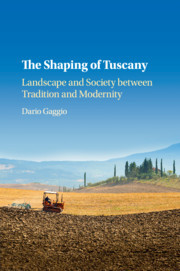The Shaping of Tuscany Landscape and Society between Tradition and Modernity
Langue : Anglais
Auteur : Gaggio Dario

This book shows how the seemingly immutable Tuscan landscape was largely shaped by modern conflicts over economic resources and cultural meanings.
To its many tourists and visitors, the Tuscan landscape evokes a sense of timelessness and harmony. Yet, the upheavals of the twentieth century profoundly reshaped rural Tuscany. Uncovering the experiences of ordinary people, Professor Gaggio traces the history of Tuscany to show how the region's modern conflicts and aspirations have contributed to forging its modern-day beauty. He demonstrates how the rise of Fascism was particularly violent in rural Tuscany, and how struggles between Communist sharecroppers and their landlords raged long after the end of the dictatorship. The flight from the farms in the 1950s and 1960s disorientated many Tuscans, prompting ambitious development projects, and in more recent decades the emergence of the heritage industry has raised the spectre of commodification. This book tells the story of how many Tuscans themselves have become tourists in their own land ? forced to adapt to rapid change and reinvent their landscape in the process.
Introduction; 1. Race, nation, land: reclaiming Tuscany's hill country under Fascism; 2. Newer beginnings: the landscape of social strife; 3. Left behind: the rural exodus; 4. The uses of emptiness: rural Tuscany after the exodus; 5. The farmhouse and the museum: Tuscany as patrimony; 6. Searching for the Bel Paesaggio: norming and litigating the landscape; Conclusion; Index.
Dario Gaggio is a Professor in the Department of History at the University of Michigan, Ann Arbor. He holds a Ph.D. in History from Northwestern University, Illinois and is the author of In Gold We Trust: Social Capital and Economic Change in the Italian Jewelry Towns (2007). His research has pioneered the integration of cultural change and political economy from an interdisciplinary perspective, combining historical methodologies with the theoretical insights of sociology, anthropology and human geography.
Date de parution : 11-2018
Ouvrage de 309 p.
15.2x22.9 cm
Date de parution : 11-2016
Ouvrage de 307 p.
15.8x23.5 cm
Thème de The Shaping of Tuscany :
© 2024 LAVOISIER S.A.S.



